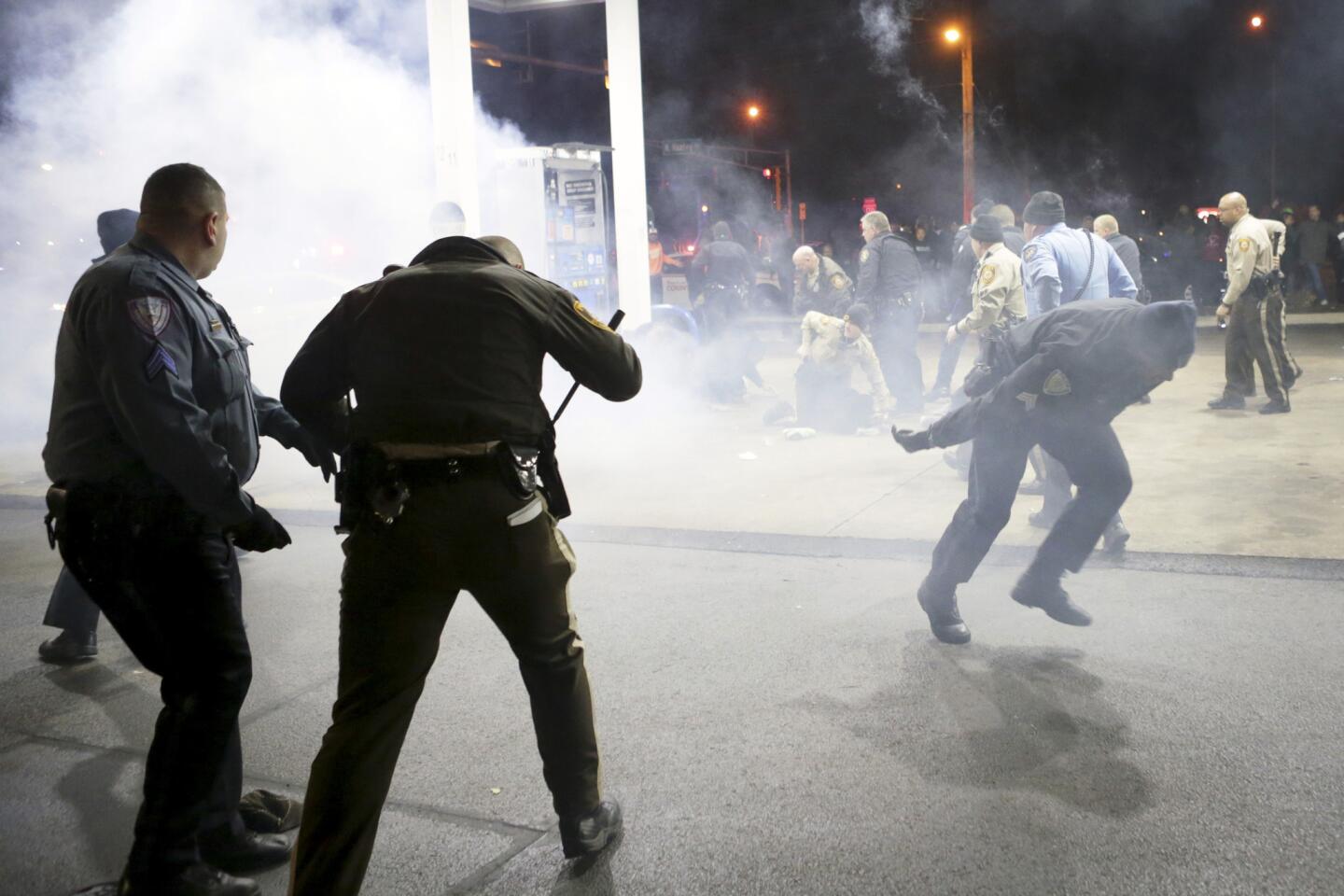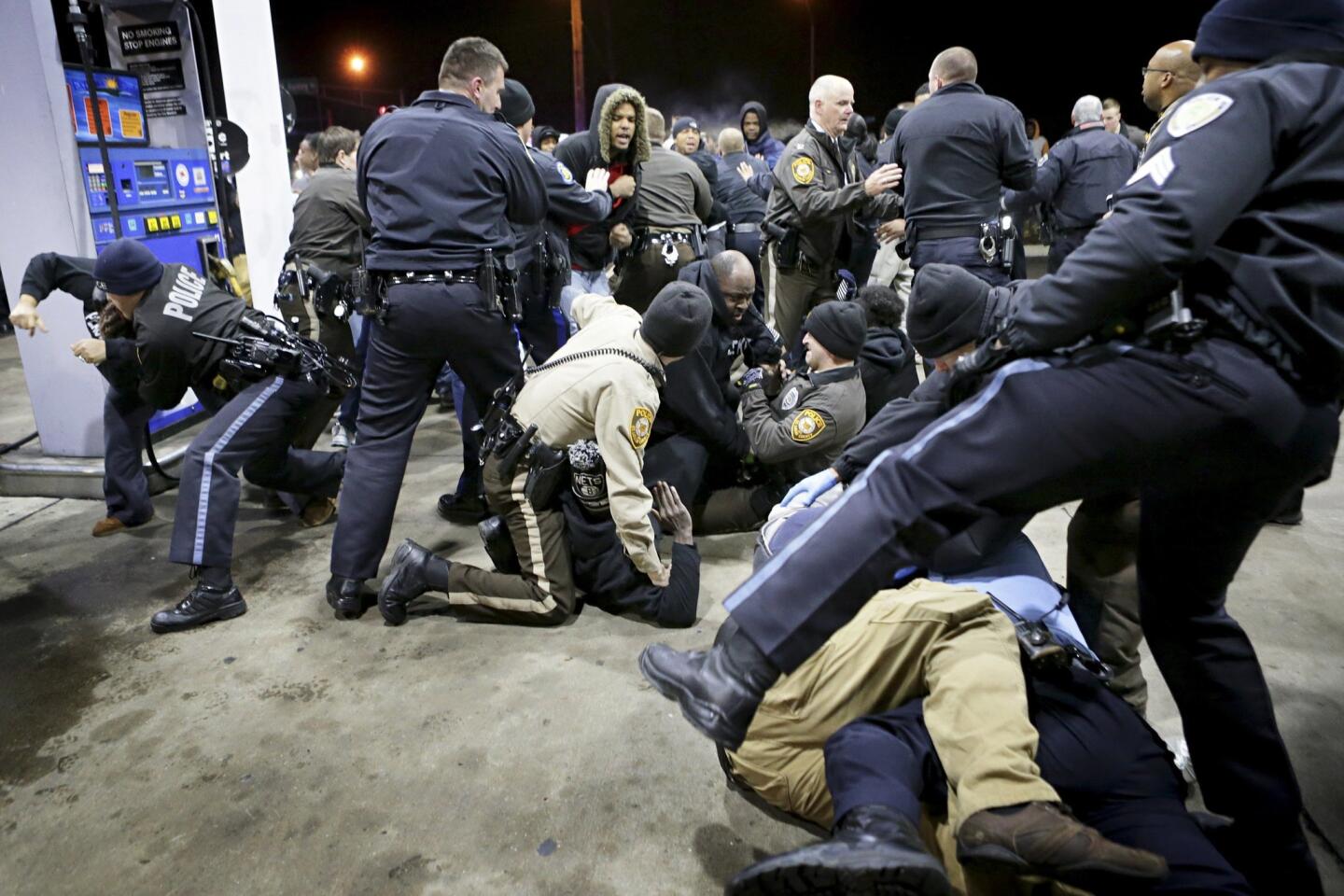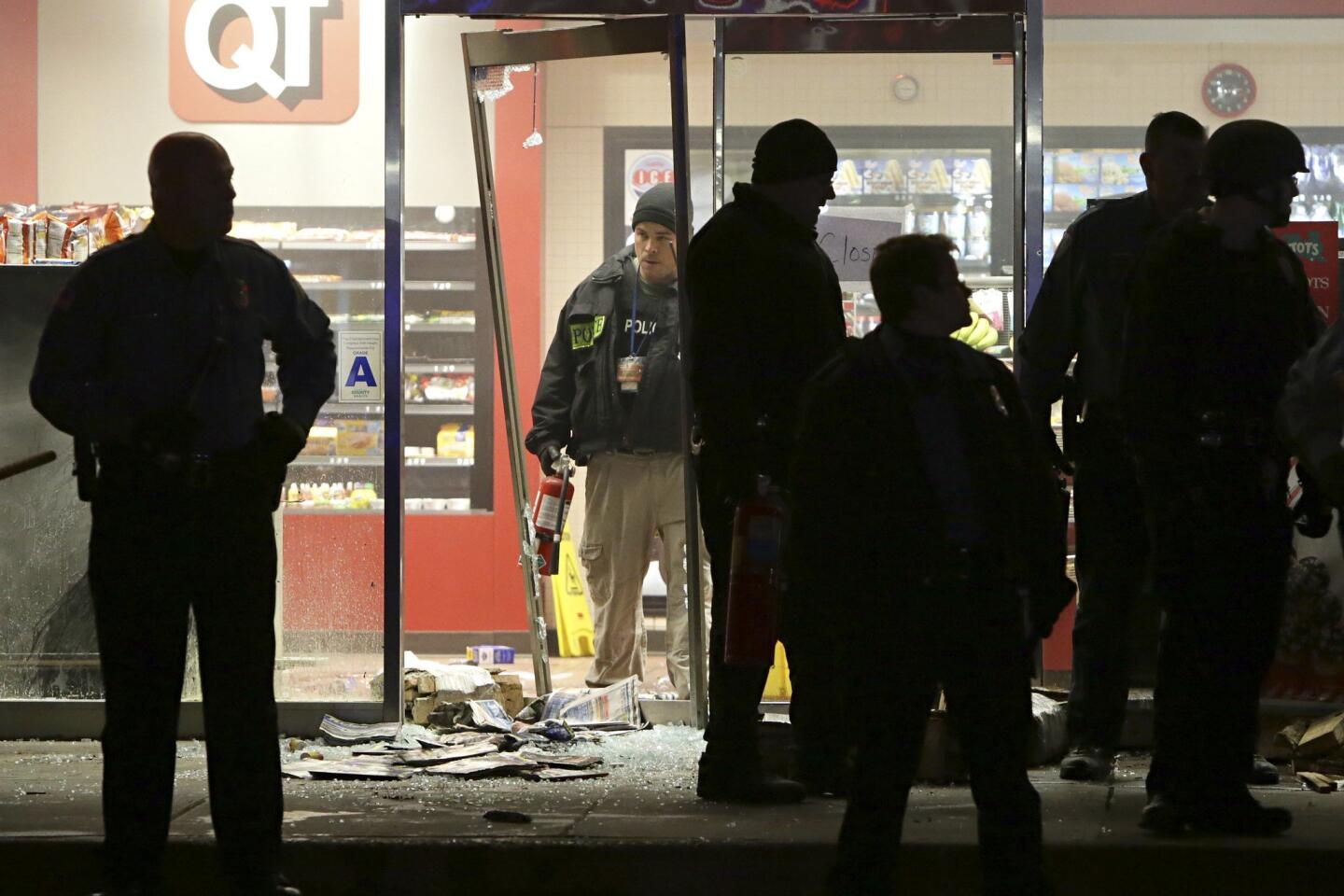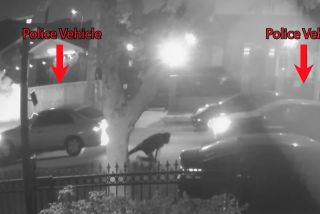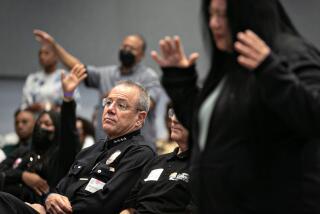Police officer kills black man near Ferguson; video captured incident
- Share via
reporting from BERKELEY, Mo. — The mayor of this St. Louis suburb near Ferguson, Mo., appealed for calm Wednesday, saying a white police officer appeared to have been justified when he shot to death a black 18-year-old who had pointed a gun. The shooting quickly escalated into a confrontation in which police came under physical and verbal attack by dozens of protesters who had gathered at the scene.
Much of the nation has been on edge since a string of shootings by police spawned racially charged protests across the country. In New York this week, officials had called for a truce between police and demonstrators, at least until after the funerals of two officers who were assassinated Saturday while they sat in their patrol car.
But whatever tenuous peace there was came undone at least for a few hours in Berkeley on Tuesday night when a white police officer, responding to a report of a theft at a gas station, encountered Antonio Martin outside the business.
When Martin pulled a gun on the officer, police said, the officer opened fire, getting off three shots while backpedaling and falling to the ground. One of those shots killed Martin — and once more, as a body lay on the ground, north St. Louis County plunged into a tense faceoff.
Once again, demonstrators swarmed onto the scene. Once again, objections were shouted, accusations thrown. And once again, the scene turned dramatic when some demonstrators tossed bricks and fireworks-like explosives, hurting at least two officers and resulting in at least four arrests on suspicion of assaulting a police officer.
“I want to know what happened to my baby! I want to know what happened to my son!” one woman cried out in agony after arriving at the scene.
“This doesn’t make any sense for them to kill my son like this,” Toni Martin-Green later told the St. Louis Post-Dispatch at her home near the University of Missouri-St. Louis campus. “I am trying to be calm.”
The event was reminiscent of the fraught aftermath of the Aug. 9 police shooting of Michael Brown in Ferguson, a town that shares a border with Berkeley, population 9,100 — and shares the distinction of being predominantly black.
But Berkeley city officials on Wednesday distanced themselves — and Tuesday night’s shooting — from the one in Ferguson that ultimately prompted weeks of demonstrations and several days of rioting. Unlike Ferguson, Berkeley has a black chief of police, and a predominantly black city government and police force.
Flanked by black city officials, Berkeley Mayor Theodore Hoskins, who is also black, held a news conference in which he extended condolences to Martin’s family, placed his faith in the unidentified white officer and said the shooting appeared to have been justified.
“At this point, our review indicates that the police did not initiate this [incident], like Ferguson,” Hoskins said, adding that that the officer may have “saved his life” by shooting the young man while stumbling and falling down. (The officer’s attorney told the St. Louis Post-Dispatch that the officer was shaken by the incident.)
A protester at the news conference challenged the mayor over his conciliatory remarks, in a flash of anger that has been heard so commonly in this area since August.
“This cannot happen in Berkeley. It has to stop happening right now,” the man shouted. “A police officer has killed another young black man, and this has to stop, and if it doesn’t stop, this country will remain accountable from this day forward, from sea to shining sea.”
“Truly you don’t believe that every person or every black that’s killed, it’s because of a white policeman,” Hoskins responded. “Do you believe that? Every time?”
Much of the mayor’s faith came from the single element that had proved so elusive in Ferguson: video of the incident.
In the version St. Louis County police released to the media, surveillance video from the gas station’s cameras only poorly captured the scene, either off in the distance or at the edge of the frame.
But in the space of a few moments, Martin’s arm can be seeing lifting toward the officer, as a bystander ducks and runs away and the officer begins to frantically move backward as he fires.
A 9-millimeter pistol with a defaced serial number was found at the scene, police said.
The presence of security cameras at the gas station was fortunate: Officials said that the officer’s dashboard camera had not been activated because the car’s lights were off and that he’d forgotten to turn on his body camera, which Berkeley’s officers have not yet been fully trained to use.
The surveillance video also quieted some of the Ferguson shooting’s harshest critics.
“I certainly think that the shooting of Michael Brown was an execution,” Missouri state Sen. Maria Chappelle-Nadal said. “In this situation, you had a young man who pointed a gun at a police officer just a few feet away.... It’s a different scenario, because police officers do have a responsibility to keep the community safe.”
Not everyone was satisfied by the video, which police, for reasons of sensitivity, edited to end before Martin can be seen getting shot.
“I want the facts,” said Martin’s grandmother, Margret Chandler, 65, of St. Louis. “If he was in the wrong, I want to know he was in the wrong. I want to see the gun in his hand. I don’t want them to tell me he had it. I want to see it. These police do some dirty things. They just wait until nightfall to see some young black men and gun them down.”
Police said that since turning 17, Martin had been arrested for armed robbery, assaults, armed criminal action and theft.
Regardless of the video, the stigma of police shootings lingered for some demonstrators and residents.
Berkeley resident Vickie Wright braved near-freezing temperatures to hold up a sign near the shooting site that read: “Save our black men. Save our children. Let justice be done so that there will be a promising future for us all.”
She didn’t know whether to believe that Martin had a gun. However, Wright said, “Our police officers need to be having a little bit more training. I don’t want them to seem they’re out shooting to kill.”
As darkness fell, about 50 people held a vigil for Martin at the gas station. They gathered around a small shrine of roses, stuffed animals and a sign that read, “They can’t kill us all.”
Pearce reported from Los Angeles and special correspondent Rayford from Berkeley, Mo.
Follow @MattDPearce for national news.
More to Read
Sign up for Essential California
The most important California stories and recommendations in your inbox every morning.
You may occasionally receive promotional content from the Los Angeles Times.

